The Checker Maven
Diagramless
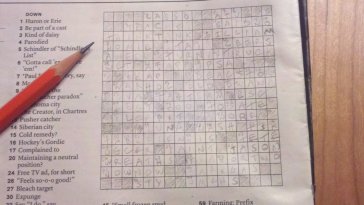
Today's column brings our loyal readers something completely different. Not only do you have to solve a checker problem, you need to figure out what the problem is! It's somewhat analogous to a diagramless crossword, though we see it as considerably easier to solve.
The following verse was published under the title "Puzzle Problem" in The Checkerist in 1887 by our old friend O.H. Richmond, whose work we've featured before. Though we've never found out what the "O.H." in "O.H. Richmond" stands for, "R.A.G." in the poem obviously refers to Robert A. Gurley.
A game of checkers once was played in 1883
Between a man named Robinson and his friend R.A.G.
It was a very pretty game; with neither one ahead.
Until it came quite near the end, when R. A. Gurley said;
"I think I have the best of it, as one can see,
With my two Kings on four and five, and single man on three."
"You may be right," said Robinson, "but I have got the move.
And though my men are single ones, yet tartars they may prove.
But I must move to eleven now, for if to twelve I go,
You catch me in a problem, by Spayth, of Buffalo."
"Ah," said Gurley, "Rob, my boy, that move was very fine.
I fear t'will let that other man from thirteen down to nine.
For if I move my single man, it lets you get a King.
And yours on twenty we'll change off as sure as anything."
The end soon came, Rob drew the game,
But Gurley found next day,
oh, what a sin! he had a win
by a pretty piece of play.
Where's the diagram? Not so fast! There's enough information in the poem to figure out the position and the terms of the problem. You'll need to do that first; if you do, you'll have a nice checker problem to solve.
When you've got it all worked out, just click on Read More to see the problem diagram and the solution.![]()
Find the Differences
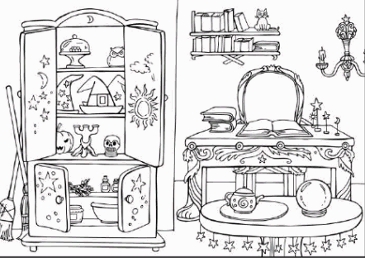
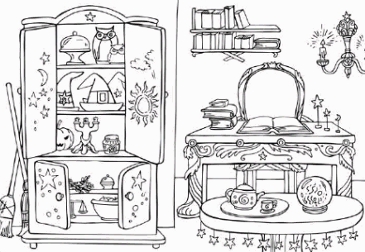
Yes, we've definitely done this theme before--- Find the Differences, that is--- but with today's Checker School lesson, it certainly bears repetition.
Much as the drawings above have subtle but important differences--- 17 of them, we're told--- the two checker positions below similarly have two small but important differences. Yet both positions yield a White victory, as long as your skills are up to the task.
BLACK
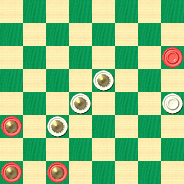
WHITE
White to Play and Win
W:WK15,K18,20,K22:B12,K21,K29,K30.
BLACK
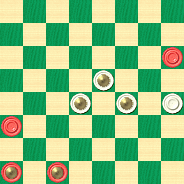
WHITE
White to Play and Win
W:WK15,K18,K19,20:B12,21,K29,K30.
Can you solve these? Of course, we recommend that you give the checker positions most of your attention, but we have to say the cartoon puzzle is interesting, too. Clicking on Read More will give you the solution to the Wyllie and Spayth problems. We still haven't completely solved the cartoon!![]()
The Kidnapped King
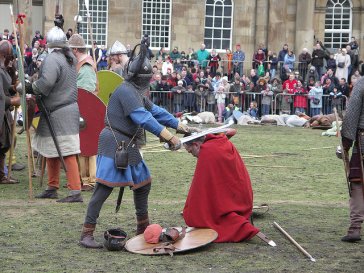
In last month's installment from Willie Ryan's Tricks Traps & Shots of the Checkerboard, Willie told us that one of the moves "sets up a fine problem study by Champion John T. Bradford, American member of the 1927 International Checker Team." But that column had already become rather involved, and so we split off Mr. Bradford's study and present it this month. We think you'll agree that it deserves space of its own.
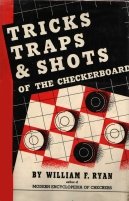
Black's position in the diagram below looks pretty good. How can White pull this one off?
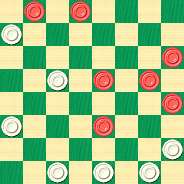
WHITE
White to Play and Win
W:W5,14,21,28,30,31,32:B1,2,12,15,16,20,23.
Don't let the apparent difficulty carry you away; with enough effort you can escape with the solution, though it will be a real struggle. When you're ready, click on Read More to see the solution and a full set of explanatory notes.![]()
Fundamentals
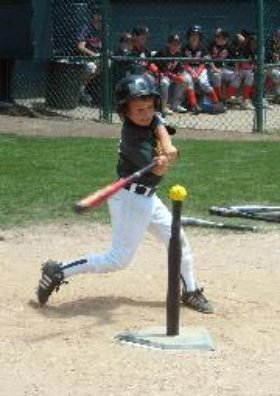
One thing experts agree on: if you're going to master something, whether it's playing baseball, writing novels, or becoming a checker champion, you've got to know the fundamentals. In the photo above, an aspiring baseball player is learning the fundamental skill of making contact with the ball.
Our game of checkers has its own fundamental skills, and solving a position like the one below is a definite and required step on the road to excellence.
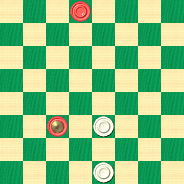
WHITE
White to Play and Draw
W:W23,31:B2,K22.
